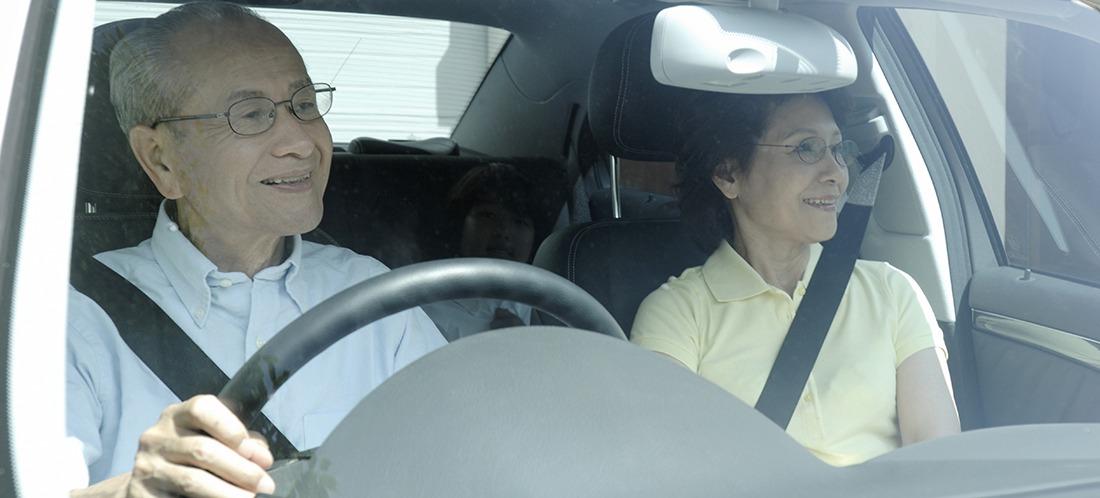Why is it important to assess a person’s medical condition and driving capacity?
The opportunity and ability to drive is important to many people, as driving facilitates people to engage with others, attend personal, social or professional functions and obligations, and access their community. Driving gives a person greater independence and freedom to perform the activities that are important to them. However, the set of skills required for driving is a highly intricate system necessitating the planning and organization of a person’s physical, cognitive (mental) and visual capacity. As driving carries with it a sizeable responsibility regarding the safety of oneself and other drivers and pedestrians, it is paramount that all drivers who share the roads drive in a safe and sensible manner.
While there are several potential factors that may make someone’s driving practices to be unsafe, such as reckless behaviour, driving under the influence of drugs or alcohol, or distracted driving, a person’s medical diagnosis may also affect driving ability. Therefore, in NSW, a licence holder is legally obligated to inform the RMS (Roads and Maritime Services) of their medical condition.

What medical conditions can affect driving?
Any medical condition or disability (cognitive or physical) can potentially impact on a person’s driving performance. Some common examples of illnesses and diagnoses that often require an OT driving assessment include:
- – Physical disability
- – Cognitive or intellectual disability
- – Brain injury
- – Stroke or heart disease
- – Developmental disorders (e.g. Autism Spectrum Disorder)
- – Amputations
- – Spinal cord injury
- – Alzheimer’s disease or dementia
- – Cognitive impairment
- – Mental health conditions
- – Visual impairment
- – Epilepsy
- – Neurological illnesses
- – Sleep disorders
- – Diabetes
Who decides if I need an OT driving assessment?
By law, it is up to the licence holder (including Learner’s licence holders) to declare to the RMS that they are diagnosed with a medical condition that potentially influences their driving skills. Following this declaration, the RMS will usually issue the driver a letter instructing them to complete an Occupational therapy (OT) driving assessment. Alternatively, any person who is worried about a person’s driving capacity, such as a family member, friend or health professional, may advise the
RMS of their concerns. Often, a person’s Doctor (usually GP or Specialist) will apprise the RMS of their apprehension, which usually involves the Doctor completing a medical form regarding fitness to drive. Once the RMS is privy to the person’s situation, they will distribute a letter directing them to organise the assessment.
The OT driving assessment – what is it?
The OT driving assessment is conducted by an Occupational therapist, who is a university-trained health professional. OTs assist people in various elements of life to enhance their skills and independence, such as driving. To become a Driver Trained OT, the OT has completed a specialised course.
The OT assessment is divided into two sections; the off-road assessment and on-road assessment. In the off-road part, the OT evaluates the person’s vision, cognition/mental aptitude to drive and physical functioning. If any major physical shortfalls are observed (for example loss of movement in a limb), the OT may anticipate that vehicle modifications will be required for the on-road assessment.
The on-road section engages the person in a 1-hour drive with the OT and rehabilitation driving instructor. For everyone’s safety, the driving instructor’s vehicle (equipped with dual-control brakes) must be used. The person will be asked to drive in all traffic conditions (from quiet single-lane roads to busy highways or major roads). While driving, the OT will be observing how the person’s medical condition may be impinging on their driving performance. This is assessed by how well the person performs in all traffic situations and whether or not the driving instructor needed to physically intervene (i.e. by using the steering wheel or applying the emergency brakes). Minor missteps that the person makes that are determined to be due to poor driving habits or being unaccustomed to the car are often overlooked.
When do I know about the outcome?
The OT will confer with the person about the results of the assessment after the drive. There are 3 possible outcomes:
- The medical diagnosis is not affecting the person’s driving. The OT will recommend to the RMS that they can continue to drive with their licence as normal.
- The medical condition is having some impact on the person’s driving conduct. The OT may specify a number of driving lessons the person needs to work on the errors observed, or the person may need vehicle modifications. If modifications are necessary, a number of driving lessons will be recommended by the OT to ensure the person drives safely with the new modifications. The person will often need to complete an OT driving reassessment and/or take the RMS disability test.
- The person’s illness is disturbing their driving performance and they are not driving safely or to RMS standards. The OT decides that the person’s condition and driving skills are not likely to improve, even with further driving lessons. In this instance, the OT will recommend that the person’s licence is cancelled






